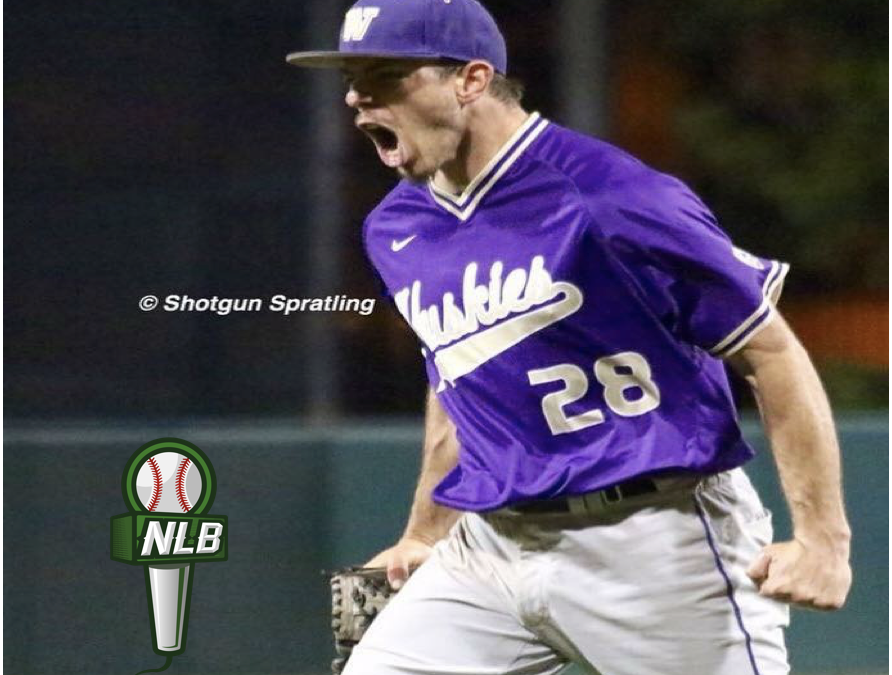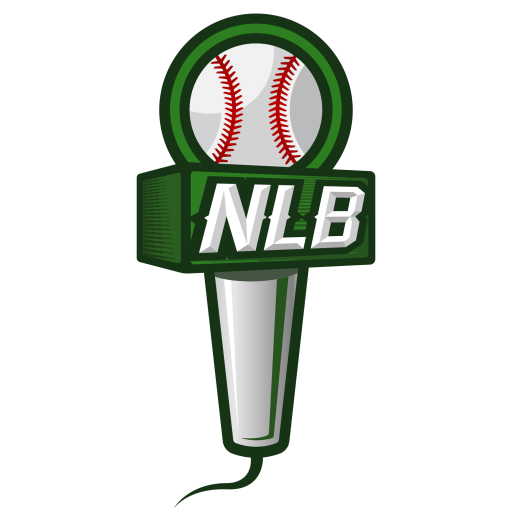Next Level Ballplayer’s Day in the Life Blog features guest posts from professional ballplayers and coaches. Players are free to write whatever they want; most of the time about their journey to the next level and what it took to get there. These are the guys grinding it out in the minors today so they can be the stars of tomorrow. If you like what you read, please feel free to drop a comment and the writer will get back to you at his earliest convenience.
Greetings boys and girls! My name is Troy Rallings. I am a right handed pitcher in the Angels organization and graduate from the University of Washington. I grew up in Seal Beach, California and currently call Carlsbad, California home. This past Monday, May 8, 2017, I became the newest member of the Los Angeles Angels of Anaheim organization. Here is my story of how I got here.
I was drafted in the 36th round by the Oakland A’s in 2015 after my junior year, however I was very committed to returning for my senior year to finish my degree unless a team gave me an offer I couldn’t refuse. I was grateful to have been selected in the draft, but felt I needed to improve before starting my professional career. I felt at home in Seattle. I loved playing in the PAC-12. As a closer, it was only natural that I wanted to finish what I started. So I came back to school with something to prove.
In 2016, my senior year at UW, I put together the season of a lifetime and cemented my legacy as one of the top 2 pitchers to ever put on a Husky uniform. I threw a whopping 61 innings in 28 appearances out of bullpen. I was the nations leader with a 0.72 WHIP, finished 2nd in the country in ERA 0.89, and 3rd in saves with 16. I was honored with prestigious awards for my hard work.
I was voted a Golden Spikes Semi finalist, National Stopper of the Year Finalist, 2016 PAC-12 Pitcher of the Year, Louisville Slugger and Rawlings First Team All-America, and District IX (West Coast) Player of the Year. In the process, I set school records for best career & single season ERA, career appearances, and tied the career saves record.
I gave my heart and soul to my team every single game with one single goal in mind, Omaha. Unfortunately I ended up sacrificing something else along the way. On May 22, 2016 in week 14 of 15 during the regular season against Stanford, my elbow finally gave out.
I underwent an MRI on my elbow which revealed a significant, yet partial tear of my Ulnar Collateral Ligament aka the UCL. I was crushed, but remained hopeful. The draft was less than 3 weeks away and was now completely uncertain of what my future held. The majority of teams shied away from me after the news of me being injured was revealed. I don’t blame them. I was 22 years old and more than likely needed Tommy John surgery.
On June 11, 2016 I was drafted 666th overall by The Angels in the 22nd round and was offered “senior money” to sign, but I had to pass a physical and be cleared. I knew this was not possible. I couldn’t shake anyone’s hand, open a jar, or break an egg in my hand. So I notified the Angels that I needed time and was not going to sign or be reporting when everyone else was after the draft. For seniors who are drafted and out of amateur eligibility, the team that drafts you owns the rights to sign you until a week prior to the following years draft. There was no guarantee that the Angels would sign me later down the road, but I wanted to take my health and my future into my own hands. I bet on me.
I spent the next month evaluating options as to how I was going to get healthy. Due to the fact that the MRI showed my UCL was not fully torn, I could have tried to go the physical therapy route along with PRP or Stem Cell injections. These are options to avoid surgery and potentially make it back in 3-4 months, however research showed the results to be hit or miss and more than half of the patients who go this route wind up getting surgery anyway. I did not have that kind of time. I sought out one of the top orthopedic surgeons in my area, Dr. Michael Shepard. His opinion was that Tommy John surgery was a viable option.
These days Tommy John surgery in baseball is ridiculously common. Why? That’s the billion dollar question. No one knows exactly what to blame. The medical community has gotten remarkable efficient and effective at performing this surgery which has a 92% success rate of guys coming back throwing as hard or even harder than they did before. The hard part is the expected recovery time to getting back into games safely is 12-18 months.
I had my TJ done on August 11, 2016. The operation itself could not be simpler. My grandmother referred to it as “drive through surgery” because it only took 105 minutes. I was in and out of the hospital around 4 hours total. The first two weeks are spent in a soft cast at 90 degrees. I slept upright on the recliner at home because a bed is not feasible. Then I progressed into the brace after 14 days which restricts range of motion.
At just under 4 weeks I had my full range of motion back which usually takes 8-10 weeks. I began physical therapy and the process of rebuilding each individual small muscle in the arm and shoulder. This part cannot be stressed enough. KEEP YOUR ARM MOVING. The longer you let it stay stagnant because its uncomfortable to move, the longer it will take to get it to function properly. The work put into your physical therapy and range of motion early on will lay the foundation for avoiding setbacks once you are able to begin lifting and then throwing.
By the beginning of November, ~3 months out of surgery it was time to take the next step. I packed up my car in Southern California and moved back up to Washington so I could begin my training at Driveline Baseball. For those who don’t know, Driveline is more or less a baseball specific sports science lab dedicated to using research based training methods to not only teach proper throwing mechanics to keep guys healthy, but also to teach intent and help guys develop velocity. It is a one of a kind facility and training program that is years ahead of its time.
I chose this path because I had prior experience training there, but also because I had a sense of urgency in getting my arm strength and health back. I am 23 years old. In the world of professional baseball, I am an old man for a 1st year player when most US player sign between 18-21. I did not want to do the generic throwing program given out by doctors that only involves playing catch with a regular 5 oz baseball. I wanted to be a test subject for what happens when someone comes back from TJ with a brand new approach. I told myself every day I wanted to change the way our world goes about rehabbing from this surgery to help guys avoid 16-18+ month rehabs that are filled with setbacks.
Before I began throwing a very important issue needed to be addressed, my weight. I hadn’t been able to lift for about 6 months (3 before surgery, 3 after). I typically walk around at 210-215 lbs, yet i was a frail 187 pounds. I worked my butt off in the weight room at Driveline and packed on 25 pounds in a matter of 8 weeks.
Next came the fun part, the return to throwing. This part requires a great deal of patience. As pitchers, all we know how to do is throw hard. Its dire to follow your program, know your limitations, and see the bigger picture. My program at Driveline did not have me touching a normal 5 oz baseball for the first 4 weeks of throwing. It consisted of regiment of low intent Plyocare balls. Reverse throws and Pivot pickoffs with a 1 & 2 kg ball, Roll-ins with the 1 kg and 450 gram ball, and rockers + walking windups with a range of overload and under load balls 450g, 225g, 150g, and 100g.
[leadplayer_vid id=”5919B50645C63″]
Those were the more strenuous “hybrid” days that were filled in with a lot of recovery days. Rebounders post throwing, which are trampoline throws/catches with a 1 & 2 kg ball were essential to getting my entire arm dialed in on force acceptance and stabilization. The Marc Pro is a low impulse stem device proved to be the single greatest recovery tool to use on an every day basis.
Instead of the usual Tommy John throwing program which has guys increasing distance and volume of throws, we focused on increasing intent and arm strength while monitoring arm action through video analysis and correcting mechanical issues. I took a mental approach of reteaching myself proper throwing mechanics instead of trying to recreate what I always knew.
Fast forward to 4 months into my throwing program. Finally it was time to test velocity. The first measure was testing my plyo ball velocity. Astoundingly, at 8 1/2 months post surgery my velocity was within 0.3-2 mph of my personal records prior to surgery at peak arm strength. That’s right, at less than 9 months out of surgery my arm strength was back. Next it was time to do the infamous Driveline “pull downs” or “Run n guns.” The first time I was just hoping to get through it without any arm pain. Miraculously, I threw a 5 oz baseball 96.4 with zero arm pain. I knew I had more in the tank. The following week I proved it by pulling down 98.6. In less than 9 months out of Tommy John and 6 months under the Driveline program, I was back.
[leadplayer_vid id=”5919B4D07952F”]
Two days later, I got a call from the Angels asking me to fly out to Arizona to sign a contract to be a professional baseball and finish my rehab at the Angels Spring Training complex in Tempe. Less than 48 hours after that it was official. I was an Angel. I threw my first bullpen this past week. It felt amazing. After a year away from the game, I am grateful for every day I get to suit up and be back out on the field. I cannot wait to take the mound in a game here relatively soon.



